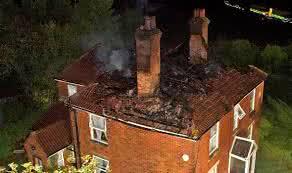Bushfires, earthquakes and floods have inflicted millions of dollars worth of damage to buildings. Now strata scheme owners are realising the vital importance of an accurate, up to date Insurance Replacement Valuation.
The recent fluctuation in the market for building materials and skilled tradespeople has resulted in many buildings currently being underinsured. Being underinsured can ultimately cost your strata scheme owners a lot more money.
Under the provisions of the Strata Schemes Management Act 1996, the Owners Corporation for a strata scheme covering an entire building has an obligation to insure the building for its full replacement value, and must obtain a professional valuation at least every 5 years.
A professionally prepared Insurance Valuation therefore allows an Owners Corporation to fulfil its obligations under the Act and be insured if all or part of the building is damaged in a disaster.
Too many get it wrong
Many Insurance Valuation providers use simple and quick calculation methods. They work out the floor area of the whole building and then multiply it by one rate per square metre. Simple but not close to accurate.
Here is an accurate valuation calculation approach…
To get the right value, a professional will divide the different areas of the building and multiply them all at different rates based on differing levels of finish, area uses and types and quantities of construction materials used.
For example, there are massive differences in construction costs for different areas, like open balconies compared to closed fire escapes & common hallways, or cross-flow ventilation car parks compared to enclosed or underground car parks.
Buildings with other improvements and assets need to be calculated too; like the type, speed & floors covered by a lift, levels of fire safety barriers and equipment.
Allowances for cost escalation caused by floods, cyclones and other disasters
There have been a number of natural disasters in Australia’s history, and the data collected from these allows calculations to be made that account for the affects. When a disaster happens there is usually a massive increase in demand with limited supply. The economic drivers of supply and demand kick in and re-construction costs rise. Three primary events that are used as a benchmark for cost escalation calculations are:
• After Cyclone Tracy (Darwin in 1974) – 28%
• After the Newcastle earthquake (1989) – 32%
• After the ACT bushfire (2003) – 50%
The cost of new building codes while redeveloping
Another contributing factor to increased costs in the redevelopment of buildings after devastation, are the new building codes (fire and floods in particular) introduced over the past few years. Whist the majority of new strata buildings, both low and high raise, conform to these new codes, many older buildings do not. As a result, there is the possibility that replacement costs can be higher. These factors must be taken into account if you want an accurate Insurance Replacement Valuation.
Summary
When considering obtaining an Insurance Replacement Valuation for your strata scheme building, ensure you employ experienced valuers and quantity surveyors who systematically break down your building’s replacement costs to the necessary level of detail so your replacement cost estimation is completely accurate. This ensures you get a professional report you can rely on.
Article author is Solutions in Engineering | www.solutionsinengineering.com | phone : 1300 136 036
Owners Corporations that require help with organizing an Insurance Replacement Valuation for their strata scheme building can contact PRECISION STRATA for assistance. We can organise for an Insurance Valuation to be prepared, apply to alter your existing building insurance policy insured amount (if required), to ensure your strata scheme is insured for the correct value.
Please contact Shane Ball [email : admin@precisionstrata.com.au ], Licensed Strata Manager and Managing Director at PRECISION STRATA for assistance with your strata scheme needs.

